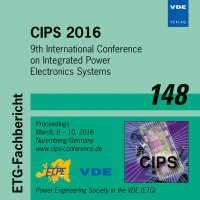Passive thermal cycling of power diodes under controlled atmospheric conditions - effects on metallization degradation
Conference: CIPS 2016 - 9th International Conference on Integrated Power Electronics Systems
03/08/2016 - 03/10/2016 at Nürnberg, Deutschland
Proceedings: CIPS 2016
Pages: 6Language: englishTyp: PDF
Personal VDE Members are entitled to a 10% discount on this title
Authors:
Brincker, Mads; Bonderup Pedersen, Kristian; Kristensen, Peter Kjaer; Popok, Vladimir (Department of Physics and Nanotechnology, Aalborg University, Denmark)
Abstract:
Degradation of Al metallization on Si based semiconductor chips subjected to power cycling is a well known problem, but the mechanisms of this phenomenon are not fully understood. To quantify contributions of different possible effects, a passive thermal cycling setup has been developed and thermal cycling of power diodes is performed, which results in electrical degradation and microstructural reconstruction of the Al layer. The degradation is characterized by sheet resistance measurements and scanning electron microscopy (SEM). Since the passive thermal cycling induces degradation very similar to what is observed for actively power cycled devices, it can be concluded that the dominating effect for the metallization reconstruction is due to the thermal-induced stresses. To examine the role of oxidation and corrosion effects, cycling tests in nitrogen environment and ordinary atmospheric conditions are compared. This comparison shows that the presence of the continuously self-passivating surface oxide limits the electrical degradation of the metallization compared to the case with no native oxide layer. Energy-dispersive X-ray spectroscopy (EDX) shows that the metallization contains more oxygen when cycling in the ordinary atmospheric conditions and X-ray diffraction (XRD) measurements gives clear evidence that the texture of the metallization layer changes significantly during cycling.


